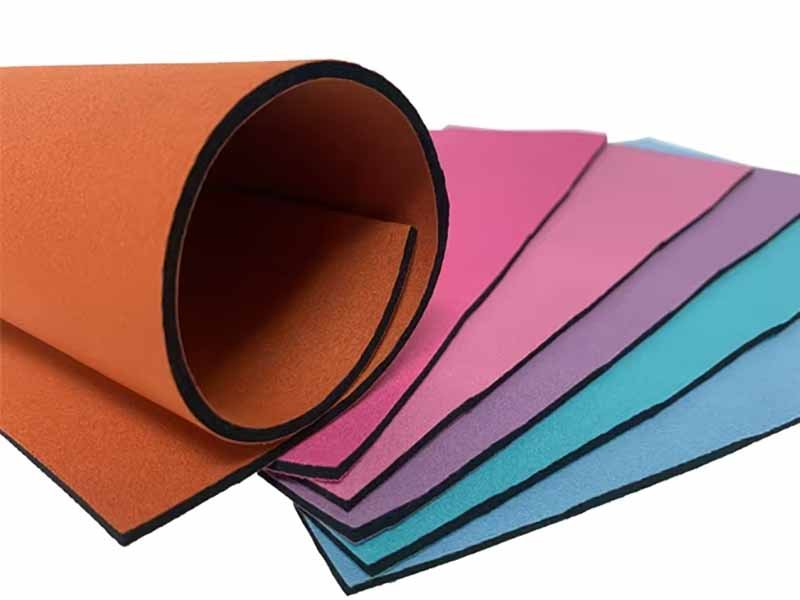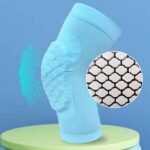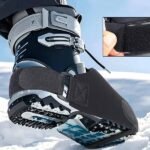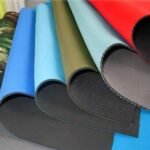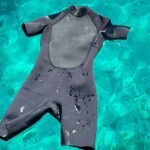When you slip into a wetsuit, hold a soft laptop sleeve, or grab a can cooler at a summer BBQ, you’re likely touching neoprene—an engineered material that feels like fabric but starts its life as synthetic rubber. Loved for its flexibility, insulation, and water resistance, neoprene is one of the most versatile textiles in modern manufacturing. Yet, many people still ask: Is neoprene a fabric or a type of rubber? How is it made? And why is it used in so many industries—from fashion to marine sports?
Neoprene is a synthetic rubber (polychloroprene) that is often laminated with fabrics such as polyester, nylon, or spandex to create a soft, durable, and flexible material. This makes it both a rubber and a fabric, combining the performance of rubber with the comfort and aesthetics of textile surfaces.
The story of neoprene begins in the 1930s when DuPont developed it as an oil-resistant substitute for natural rubber. Over time, manufacturers learned to bond it with fabrics, creating laminated sheets that could be cut and sewn like cloth while keeping the water-resistant core intact. Today, neoprene is everywhere—from high-performance wetsuits to fashionable tote bags.
In this article, we’ll unpack exactly what neoprene fabric is, how it’s made, its key properties, product applications, types, care tips, and how you can source custom neoprene products directly from an experienced OEM like Szoneier. By the end, you’ll know exactly why this material has become an industry standard—and how you can use it to strengthen your product line.
What is Neoprene Fabric and How is it Made?
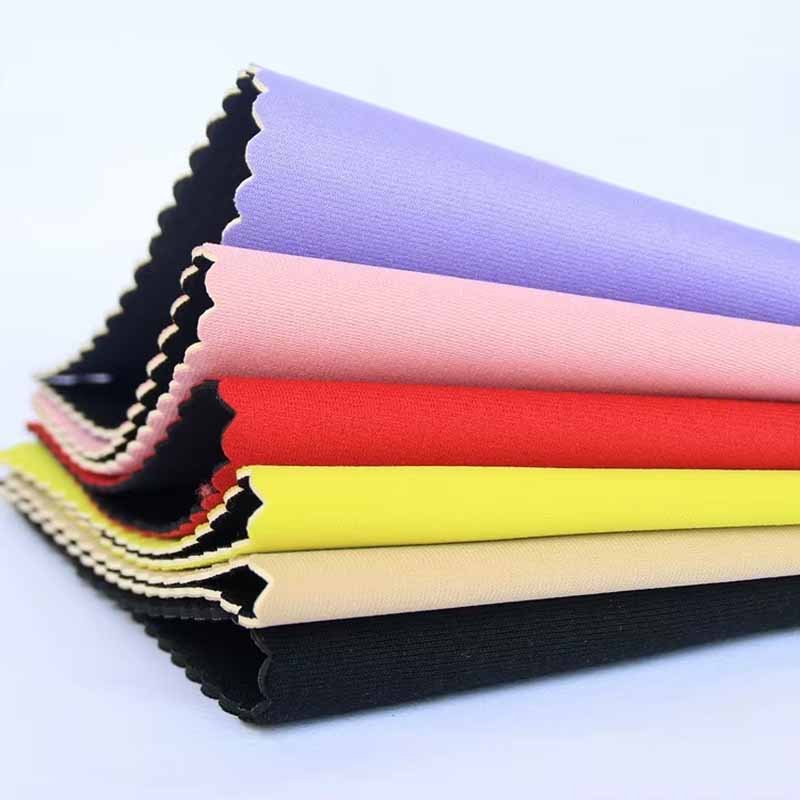
Neoprene fabric is made by laminating synthetic rubber (polychloroprene) with textile layers such as polyester, nylon, or spandex. The rubber core provides durability, insulation, and water resistance, while the fabric layers add comfort, strength, and style.
Neoprene begins as polychloroprene, a synthetic rubber produced through polymerization of chloroprene monomers. This rubber is created in large sheets and can range in thickness from 1mm to over 10mm, depending on the application.
Step-by-Step Manufacturing Process:
| Step | Description | Purpose |
|---|---|---|
| 1. Polymerization | Chloroprene monomers are chemically bonded | Forms synthetic rubber base |
| 2. Sheet Formation | Rubber is molded into sheets | Prepares material for lamination |
| 3. Curing | Heat and pressure strengthen structure | Increases durability |
| 4. Lamination | Rubber bonded with polyester/nylon/spandex fabrics | Adds comfort & appearance |
| 5. Finishing | Cutting, printing, coating | Prepares for final use |
Why laminate neoprene?
On its own, raw neoprene is durable but not very comfortable against the skin. By laminating it with fabrics like nylon jersey or polyester tricot, you get a smooth, color-customizable surface that’s easier to sew, print, or emboss.
Thicknesses are carefully chosen:
- 1–3mm → gloves, fashion accessories
- 3–5mm → wetsuits, laptop sleeves
- 5–10mm → industrial padding, protective gear
Is Neoprene Considered a Fabric or Rubber?
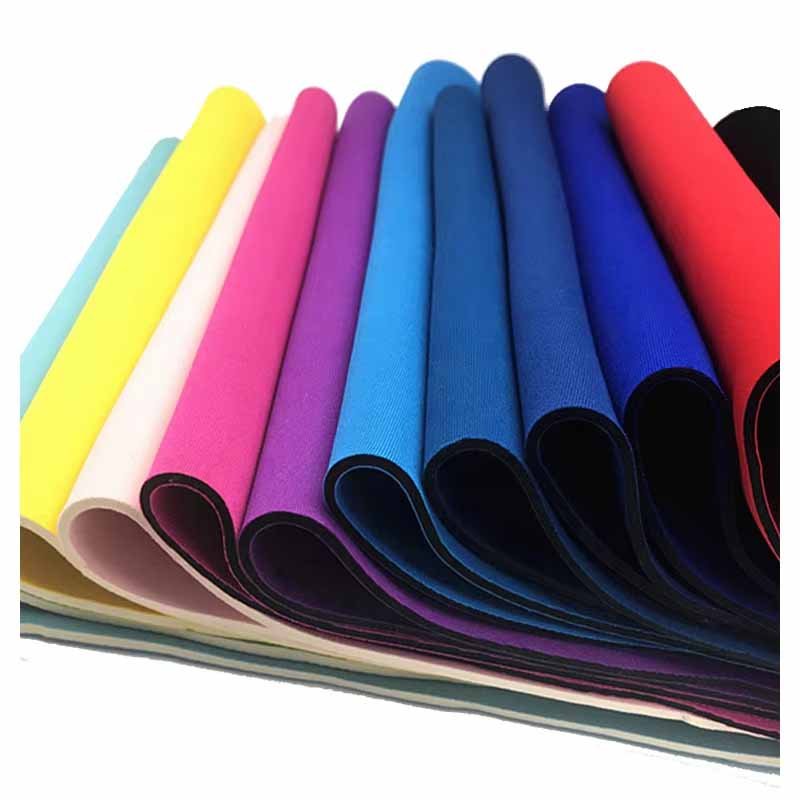
Neoprene is primarily a synthetic rubber, but when laminated with textiles, it becomes a composite fabric used in apparel, accessories, and industrial products.
This is a common point of confusion. Technically, neoprene is not a textile fiber—it’s a closed-cell synthetic rubber. However, once laminated with fabrics, it behaves like a textile:
- It can be cut, stitched, and hemmed
- It can be printed, embossed, or dyed
- It offers softness and stretch for comfort
From a performance perspective, neoprene keeps the properties of rubber: water resistance, insulation, and chemical resistance. From a design perspective, it inherits the look and feel of whatever fabric it’s laminated with—nylon for sleek performance, polyester for durability, spandex for stretch.
That’s why in industry catalogs, you might find it under “technical fabrics” rather than raw rubbers.
What Are the Key Properties of Neoprene?
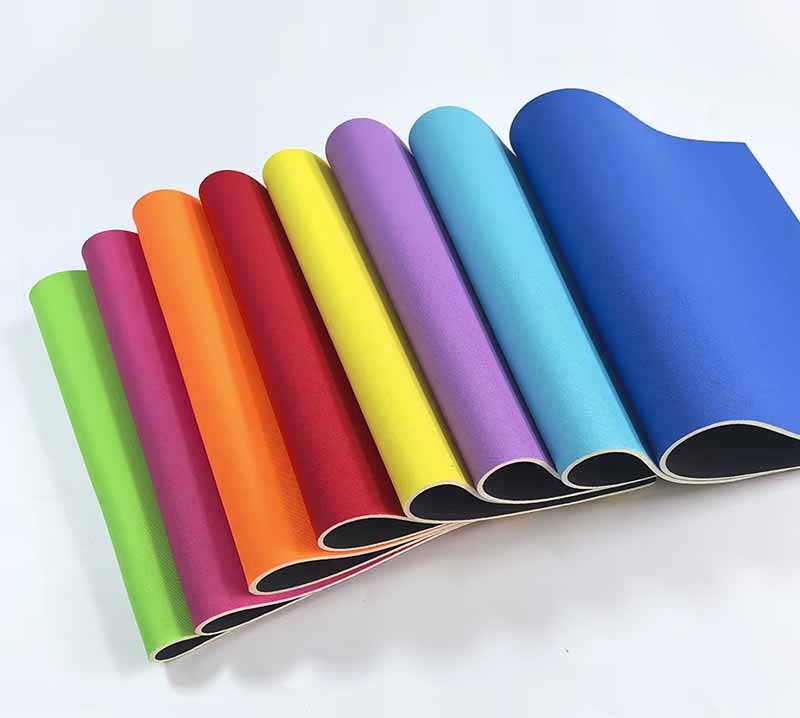
Neoprene is durable, flexible, water-resistant, insulating, UV-resistant, and chemical-resistant, making it ideal for sportswear, protective gear, marine products, and industrial applications.
Neoprene’s key properties are the reason it has become a go-to material for so many industries—from wetsuits and gloves to laptop sleeves and industrial padding.
1. Water Resistance
Neoprene has a closed-cell structure, meaning tiny nitrogen bubbles are trapped inside the rubber. This makes it almost completely impermeable to water. Even after hours in the ocean or a rainstorm, neoprene won’t soak through. That’s why it’s a staple in marine gear and protective covers.
2. Thermal Insulation
Because of its air-filled cells, neoprene naturally slows heat transfer. It keeps warmth close to the body in cold conditions, making it the standard choice for wetsuits, diving gloves, and cold-weather sports accessories.
3. Flexibility & Comfort
When laminated with nylon, polyester, or spandex, neoprene gains a soft-touch surface and enhanced stretch. This combination provides a snug fit without restricting movement—critical for active wear and support gear.
4. Durability & Abrasion Resistance
Neoprene resists tears, punctures, and surface wear better than many textiles. This toughness extends the lifespan of products that undergo frequent handling, friction, or impact.
5. UV & Chemical Resistance
Neoprene is stable under sunlight and resists damage from oils, solvents, and many chemicals. This makes it suitable for outdoor and industrial environments where other fabrics would degrade quickly.
Performance Overview Table:
| Property | Rating | Why It Matters |
|---|---|---|
| Water Resistance | ★★★★★ | Essential for marine & wet sports gear |
| Thermal Insulation | ★★★★☆ | Keeps users warm in cold environments |
| Flexibility | ★★★★☆ | Comfort and freedom of movement |
| Durability | ★★★★★ | Long-lasting even under heavy use |
| UV Resistance | ★★★★☆ | Withstands prolonged sun exposure |
| Chemical Resistance | ★★★★★ | Handles oils, solvents, and cleaners |
Which Industries and Products Commonly Use Neoprene?
Neoprene is widely used in sportswear, marine equipment, protective gear, fashion accessories, medical supports, and industrial applications due to its durability, flexibility, and water resistance.
Neoprene’s combination of rubber-like performance and fabric-friendly versatility has made it a favorite across industries. It not only offers water and chemical resistance but also delivers comfort, insulation, and branding possibilities—making it valuable for both functional and aesthetic products.
1. Sportswear & Outdoor Equipment
- Wetsuits & Drysuits: Surfers, divers, and triathletes rely on neoprene for insulation and flexibility.
- Gloves, Boots, and Hoods: Provide warmth and dexterity in cold water.
- Fishing & Kayaking Gear: Keeps the body warm and protected in wet conditions.
2. Marine & Watercraft Accessories
- Boat Covers & Fenders: Resist saltwater damage and UV exposure.
- Life Jackets & PFD Belts: Lightweight yet strong, with minimal water absorption.
- Sailing Gear: Offers grip, weatherproofing, and comfort.
3. Protective & Industrial Gear
- Impact Padding: Used in work gloves, safety vests, and tool wraps.
- Industrial Covers: Protects machinery from moisture, oils, and chemicals.
- Vibration Dampers: Reduces noise and mechanical wear.
4. Fashion & Lifestyle Accessories
- Tote Bags & Backpacks: Adds structure and a premium feel.
- Laptop & Tablet Sleeves: Shock-absorbing and stylish.
- Drink Koozies: Keeps beverages cold longer.
5. Medical & Orthopedic Applications
- Knee & Elbow Supports: Compression and stability for injury recovery.
- Back Braces: Offers support with flexibility for movement.
- Thermal Wraps: Retains heat to soothe sore muscles.
Industry Use Table:
| Industry | Common Products | Why Neoprene Works Well |
|---|---|---|
| Sportswear | Wetsuits, gloves, boots | Warmth, stretch, water resistance |
| Marine | Boat covers, PFD straps | UV & saltwater resistance |
| Industrial | Tool covers, vibration dampers | Chemical resistance, durability |
| Fashion | Bags, sleeves, koozies | Structure, style, shock absorption |
| Medical | Braces, supports, wraps | Compression, comfort |
How Does Neoprene Compare to Other Fabrics?
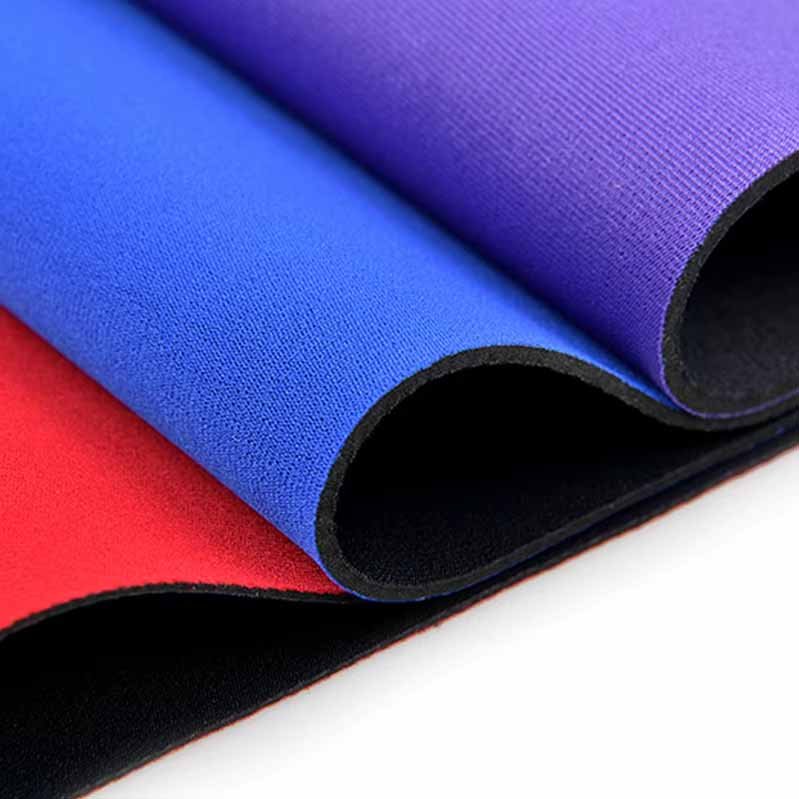
Neoprene offers superior water resistance, insulation, and durability compared to fabrics like polyester, nylon, and spandex, but it is heavier and less breathable.
Neoprene stands out for its technical performance, but every fabric has trade-offs. If you’re developing a product, it’s important to weigh these differences.
Neoprene vs. Polyester
- Pros for Neoprene: Better insulation, water resistance, cushioning.
- Cons: Heavier, less breathable, more expensive.
- Use Cases: Neoprene for protective covers; polyester for lightweight bags.
Neoprene vs. Nylon
- Pros for Neoprene: Softer feel, more structure, insulation.
- Cons: Nylon dries faster, is lighter, and cheaper in some applications.
- Use Cases: Neoprene for wetsuits; nylon for rain jackets.
Neoprene vs. Spandex (Lycra)
- Pros for Neoprene: Structure, protection, warmth.
- Cons: Spandex is far more breathable and flexible for close-fitting sportswear.
- Use Cases: Neoprene for braces; spandex for leggings.
Comparison Table
| Feature | Neoprene | Polyester | Nylon | Spandex |
|---|---|---|---|---|
| Water Resistance | ★★★★★ | ★★★★☆ | ★★★★☆ | ★★☆☆☆ |
| Thermal Insulation | ★★★★☆ | ★★☆☆☆ | ★★☆☆☆ | ★☆☆☆☆ |
| Flexibility | ★★★★☆ | ★★★☆☆ | ★★★☆☆ | ★★★★★ |
| Durability | ★★★★★ | ★★★★☆ | ★★★★★ | ★★★☆☆ |
| Weight | Heavy | Light | Light | Very Light |
| Breathability | Low | High | Medium | High |
In the OEM/ODM world, choosing neoprene is often about product positioning—it creates a premium, protective feel that resonates with customers seeking quality over minimal weight. At Szoneier, we often combine neoprene with polyester or nylon panels to balance cost, breathability, and branding possibilities.
Do Different Types of Neoprene Exist?
Yes. Neoprene comes in types like CR (chloroprene rubber), SCR blends, smooth skin, perforated, and laminated variants, each suited for specific uses.
1. CR (Chloroprene Rubber) Neoprene
- Highest quality, pure neoprene rubber.
- Excellent durability, flexibility, and chemical resistance.
- Often used in professional wetsuits, medical supports.
2. SCR (Styrene-Chloroprene Rubber) Neoprene
- A blend of chloroprene and styrene-butadiene rubber.
- More affordable, slightly less durable.
- Common in budget wetsuits, consumer accessories.
3. Smooth Skin Neoprene
- No fabric lamination on one side, smooth rubber finish.
- Excellent water and wind resistance.
- Used in triathlon suits, swim caps.
4. Perforated Neoprene
- Small holes for breathability.
- Ideal for braces, supports, and some fashion items.
5. Laminated Neoprene
- Bonded with polyester, nylon, or spandex fabric.
- Easier to sew, print, and customize.
Type & Use Table:
| Neoprene Type | Key Benefit | Common Uses |
|---|---|---|
| CR | Premium durability | Pro wetsuits, medical gear |
| SCR | Affordable | Everyday accessories |
| Smooth Skin | Hydrodynamic | Swim gear |
| Perforated | Breathable | Braces |
| Laminated | Customizable | Bags, covers, cases |
How Should You Care for Neoprene Products?
Rinse neoprene in fresh water after use, air dry away from heat and sunlight, and store flat or loosely rolled to maintain shape and flexibility.
Neoprene is tough, but proper care extends its life—critical for products like wetsuits or branded accessories.
Cleaning:
- Use cold or lukewarm fresh water after exposure to salt, chlorine, or sweat.
- Mild soap only; avoid bleach or strong detergents.
- Never machine wash or tumble dry unless product tag allows.
Drying:
- Air dry flat or on a wide hanger.
- Avoid direct sunlight or heaters, which can cause cracking.
Storage:
- Store flat or loosely rolled.
- Keep away from sharp edges to prevent permanent dents or cuts.
Pro Tip for Branded Neoprene:
For OEM orders with printed or embossed logos, always recommend customers store products logo-side out of direct light to preserve color vibrancy.
Where to Source Custom and Wholesale Neoprene Fabric Products?
Szoneier manufactures custom neoprene products with OEM/ODM services, offering free design, low MOQs, fast sampling, and global shipping.
Szoneier has been engineering neoprene products for over 18 years, serving clients from emerging boutique brands to global high-end retailers.
Our Advantages:
- Full OEM & ODM Support: From concept to final shipment.
- Wide Product Range: Bags, koozies, gloves, covers, wetsuits, and more.
- Customization Options: Thickness, lamination type, fabric color, printing, embossing, logo styles.
- Free Design & Sampling: Make sure the prototype matches your vision before mass production.
- Low MOQ: Flexible for startups and established brands.
- Fast Lead Times: Efficient production without compromising quality.
- Global Shipping: Delivered directly to your distribution centers.
Final Thoughts
Neoprene’s unique combination of rubber performance and fabric versatility makes it one of the most adaptable materials in manufacturing today. Whether you need a functional wetsuit, a protective laptop sleeve, or a branded drink cooler, it can be engineered to deliver on comfort, style, and durability.
With the right manufacturing partner—one who understands material science, product design, and brand positioning—you can leverage neoprene to differentiate your product line. That’s where Szoneier comes in: decades of expertise, proven quality control, and a genuine commitment to helping your products stand out in the marketplace.

